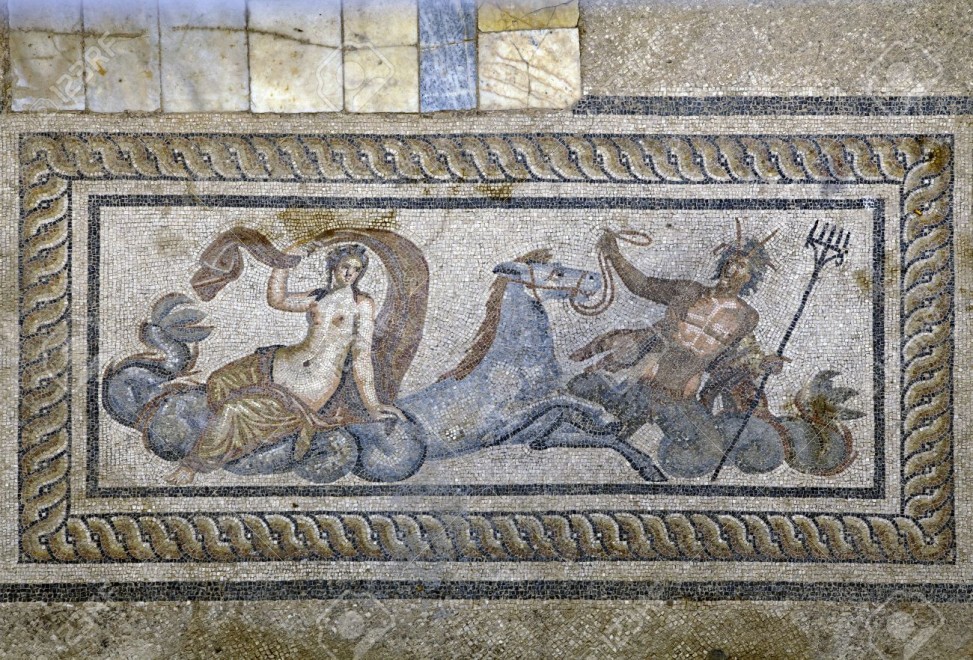The subject of this work is Poseidon taking Amphitrite (Goddess Queen of the Sea) to their wedding with a hippokampos, although multiple other interpretations exist this one seemed the strongest. This is because if one looks at the emotions being conveyed in the artwork we can see that there is slack in the reins, showing that the hippokampos is submissive to Poseidon; and also that Amphitrite has a passive quality to her as well in that she is sitting gently on the back of the hippokampos while she waves her garments in the wind. Line is used as a baseline and throughout the border of the work, displaying a repetitive pattern that frames the piece. The curled tails of both the hippokampos and Poseidon soften the image by creating a cloud-like appearance. There is lots of negative space around the figures, as the artist doesn’t want to distract from the well known narrative. Colours used in the artwork include yellow in the garment of Amphitrite, blue in the body of the hippokampos and various shades of browns throughout the remaining parts of the image. The choice of medium is important because it is more durable than most other mediums, and since it is on the floor it seems suitable that the artist would choose to use a mosaic. Tiles are commonly used in places where it is often wet such as bathrooms or pools, and so depicting a water scene in one of these environments seems most appropriate. It is currently on display in the hillside houses of Ephesus, Turkey, dating back to around 1st-2nd century CE.
